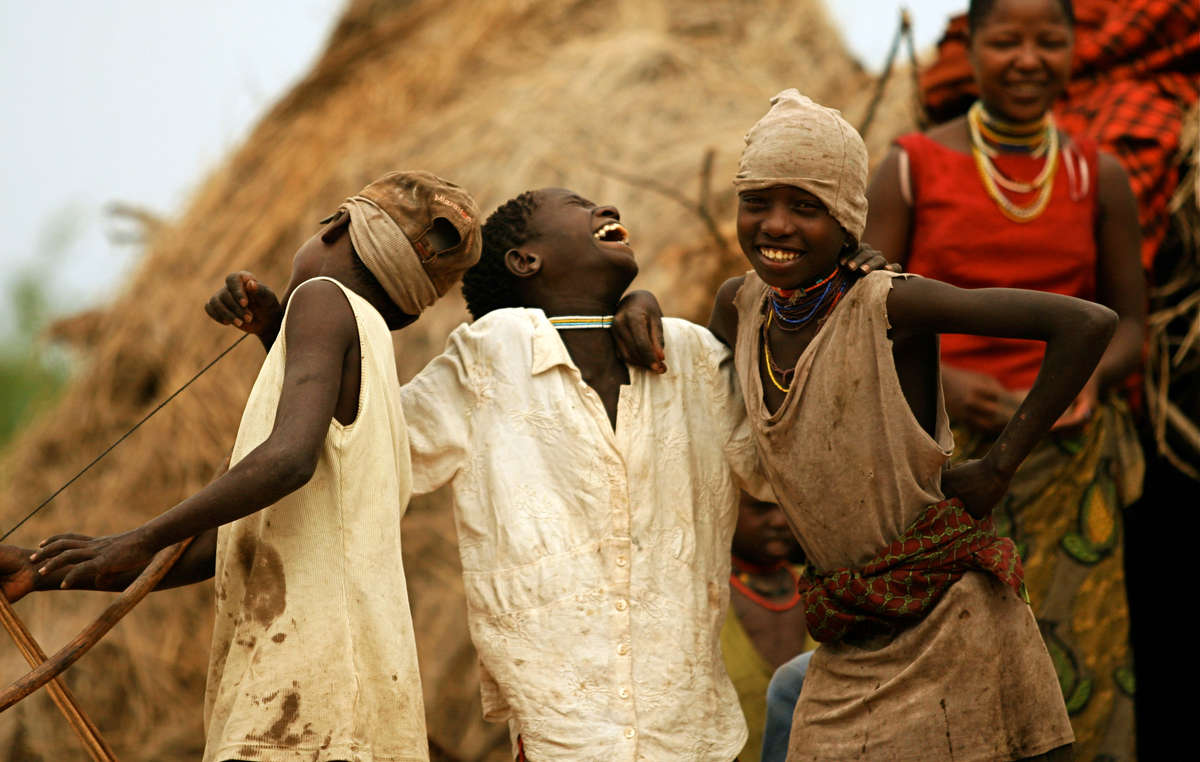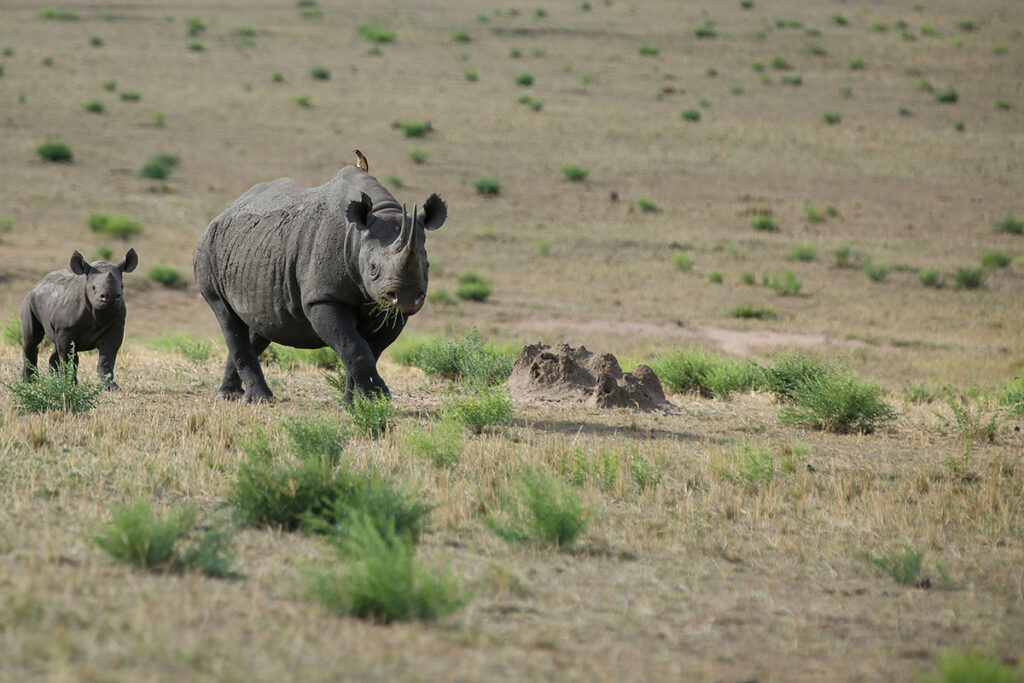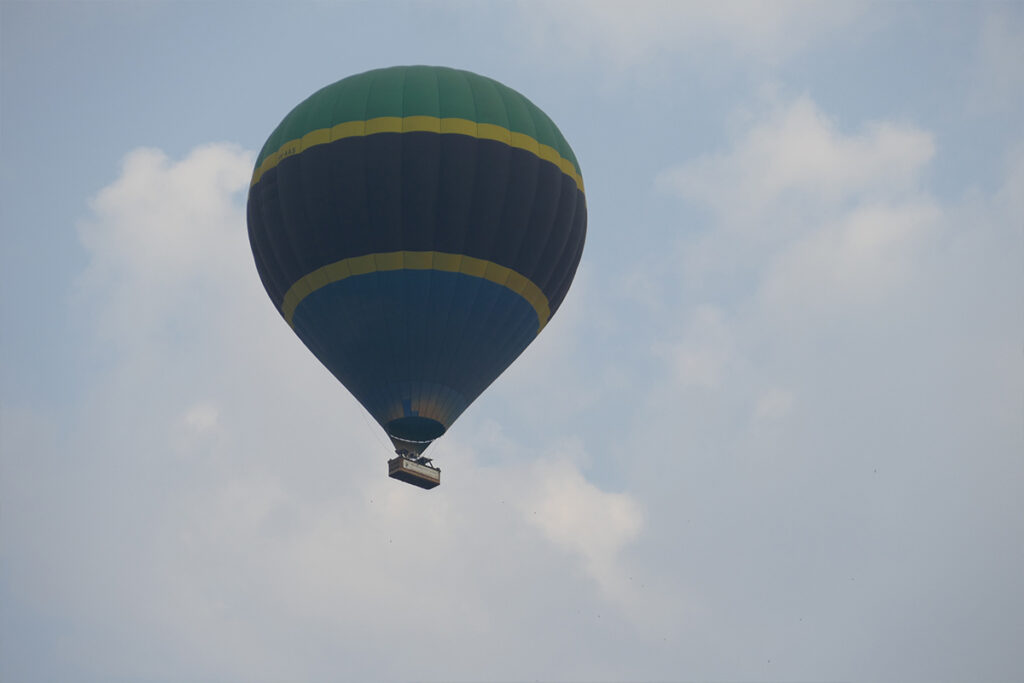While civilizations have raced towards modernity, the Hadzabe tribe of Tanzania offers a rare glimpse into the undisturbed rhythm of ancient life. Nestled by the shores of Lake Eyasi, Hadzabe’s traditional hunting and gathering methods have hardly changed over the thousands of years. In a world teetering on technological edges, how have such ancient practices endured with remarkable resilience?
The Hadzabe, believed to be among the last hunter-gatherer societies, uphold traditions dating back over 40,000 years. With a population of only about 1,300, they efficiently utilize nearly 1,200 square miles of ancestral land. Remarkably, their language remains a unique linguistic treasure, teeming with clicks akin to those found in the Khoisan languages of southern Africa, ensuring the continued survival of an irreplaceable cultural heritage.

Hadzabe Tribe: A Glimpse into Ancient Tanzanian Culture
The Hadzabe tribe in Tanzania captivates the world with their ancient lifestyle. They thrive on skills passed down through generations, known for their hunting and gathering expertise. Located near Lake Eyasi, the Hadzabe live in harmony with nature. Their activities revolve around hunting animals and foraging for berries and tubers. This natural way of life stands as a testament to resilience, even amid modernity’s looming influence.
Their diet is unique, relying heavily on locally available resources without agriculture. Meat procured from animals, fruits, berries, and honey are staples. Their sustainable methods highlight a deep understanding of ecology. In many ways, their practices are environmentally friendly, as no part of an animal is wasted. Additionally, they adjust their hunting routes as seasons change to maximize efficiency.
Language plays a significant role in Hadzabe culture, characterized by distinct clicking sounds. The language is part of the Khoisan family, unique yet endangered as the tribe’s population dwindles. In this post, the pressing need for linguistic preservation becomes apparent. Much like their hunting rituals, the language is an integral part of their identity. Efforts are underway to document and preserve this cultural gem for future generations.
Interaction with the outside world remains limited but inevitable for the Hadzabe. Efforts to integrate them into broader society sometimes clash with preserving their traditions. However, communication channels through tourism provide a glimpse into their world while offering economic support. Tourists flock to this region, eager to witness their unique skills and traditions firsthand. According to the article, the symbiotic relationship with outsiders helps keep their cultural tapestry vibrant despite modern challenges.
Discover the Hadzabe Tribe: A Gosheni Safaris Expedition into Tanzania’s Ancient Culture
Narrating a Timeless Tale: Overview of the Hadzabe Tribe
The Hadzabe tribe represents one of the last remaining hunter-gatherer cultures in the world. This ancient group resides in the sprawling savannahs of Northern Tanzania. Despite the passage of time, they have preserved practices deeply rooted in human history. Living without agriculture, they depend on nature’s bounty for sustenance. Their traditions showcase a unique blend of resilience and simplicity.
The Hadzabe’s daily activities revolve around hunting and gathering. Men usually hunt game using bows and poison-tipped arrows. Women foray into the wilderness, collecting fruits and wild plants. Hunting provides more than just food; it is a communal activity, strengthening bonds and ensuring survival. Their seamless connection with the land provides insight into age-old ecological wisdom.
Location plays a crucial role in the Hadzabe’s way of life. Nestled near the Serengeti, their land offers abundant resources. Such diverse ecosystems provide varied foods throughout the year. This adaptability to different environments is a key aspect of their lifestyle. Their inherent knowledge of flora and fauna supports their sustainable living practices.
Modernity, however, encroaches upon this ancestral narrative. Threats like land encroachment and changing climates challenge traditional ways. Although outside influences can bring forth opportunities, they may also disrupt their fragile balance. Preserving their culture remains imperative. Recognizing the Hadzabe tribe’s contributions helps maintain their legacy in today’s world.
Everlasting Echoes of the Ancient: The Lifestyle of the Hadzabe
The lifestyle of the Hadzabe harks back to humanity’s earliest methods. Living mostly as nomads, they follow seasonal changes to secure food sources. For them, survival is anchored in community cooperation. As hunter-gatherers, they skillfully hunt using handcrafted bows and arrows. These tools are essential for their daily needs and embody a deep understanding of their environment.
The Hadzabe’s relationship with nature extends beyond hunting. Gathering activities largely involve women and children. Their diet combines wild plants, fruits, and honey. The honey collection from beehives is a celebrated skill among them. Through such practices, the Hadzabe illustrate an ancient yet efficient way of living.
Cultural rituals form a vital part of Hadzabe life, with storytelling and dance playing significant roles. Stories passed through generations are shared around campfires at night. Their songs often resonate with the sounds of nature. This tradition highlights how their culture is intertwined with everyday life. It’s in these moments that their history comes alive, preserving ancient wisdom.
Challenges are evident as they face pressures from the modern world. Land disputes threaten their habitats, and climate change affects their resources. However, they adapt by using resourceful knowledge and community strength. Their sustainability model offers lessons on living in harmony with nature. Preserving the Hadzabe way of life remains essential, ensuring echoes of the ancient continue to resonate.
Endangered Elixir: An Insight into the Hadzabe Language
The Hadzabe language is a remarkable aspect of their culture. It belongs to the Khoisan language family, characterized by unique click sounds. These clicks are integral to communication among tribe members. Such linguistic features make their language distinct and fascinating. However, the decline in speakers poses a significant threat to its survival.
With only about 1,300 speakers, the language is highly endangered. Many younger tribe members are shifting towards Swahili. This shift results from increasing interaction with Tanzanian society. Language loss means more than just losing words; it erodes cultural identity. Efforts to revive and document the language are currently underway.
An essential aspect of preserving the Hadzabe language involves documentation. Linguists and cultural anthropologists are recording stories, songs, and daily conversations. These efforts ensure that linguistic heritage is safeguarded. Documentation also aids in language education for future generations. Maintaining tradition in this way is crucial to cultural continuity.
Technology plays a role in the language preservation initiative. Digital tools are used to create archives and educational resources. Interactive apps offer language learning opportunities for younger generations. Through technology, the once-distant clicks of the Hadzabe language can be heard worldwide. These advancements open new avenues for cultural conservation.
Preservation involves more than recording sounds. Social programs aim to foster pride in linguistic heritage. Encouraging the use of the language in daily life strengthens cultural bonds. Such initiatives foster a resilient sense of identity among tribe members. It’s a holistic approach, ensuring the survival of a language rich in history.
The Hadzabe language is not just a means of communication. It’s a vessel of collective memory and tradition. Safeguarding this treasure requires committed efforts from both within and outside the tribe. By valuing and promoting their linguistic heritage, we help the Hadzabe preserve a vital part of their cultural fabric. Their language remains a sacred elixir, vital to the tribe’s identity and legacy.
Preserving the Past: How the Hadzabe manage to Sustain their Traditions
The Hadzabe tribe’s commitment to preserving their traditions is remarkable. Despite numerous external pressures, they continue to uphold their ancestral ways. This preservation is achieved through strong community bonds and the consistent practice of their hunting-gathering lifestyle. By passing down stories and skills to the younger generation, they ensure continuity. These practices connect them deeply to their heritage and land.
Traditional rituals play a vital role in their cultural preservation. Ceremonies such as initiation rites and seasonal celebrations are key aspects. These events are not simply social gatherings but educational moments. Young members learn about their history, values, and responsibilities. Through these rites, cultural knowledge is transferred and retained within the tribe.
Another critical aspect is the tribe’s reliance on natural resources, which aligns with their ecological knowledge. Sustainable living is intrinsic to their culture. They harvest only what they need, avoiding over-exploitation. This approach sustains their environment while preserving resources for future generations. Living in harmony with nature ensures the tribe’s long-term survival.
| Method of Tradition Preservation | Benefits |
|---|---|
| Rituals and Ceremonies | Instills cultural values and history |
| Storytelling | Keeps history alive; strengthens community bonds |
| Sustainable Living | Preserves natural resources; ensures future survival |
| Knowledge Transmission | Educates younger generation; maintains continuity |
Interaction with the outside world is cautiously managed to protect their traditions. They selectively embrace aspects of modernity that do not compromise their values. Tourism provides economic benefits and raises awareness about their way of life. Visitors experience their culture firsthand through guided tours and demonstrations. Even in the face of modernization, the Hadzabe remain steadfast in maintaining their traditions.
Meeting Modernity: The Hadzabe Interaction with the Outside World
The Hadzabe tribe’s interaction with the modern world is a delicate balance. On one hand, contact with the outside world brings opportunities for economic support and cultural exchange. On the other, it poses risks to their traditional way of life. Tourism has become an essential part of their economy, allowing them to maintain their lifestyle. Guided tours provide visitors a chance to see the Hadzabe’s hunting and gathering skills up close.
External influences have also led some younger Hadzabe to integrate aspects of modern life. Education opportunities in nearby schools expose them to new ideas and skills. While beneficial, this can sometimes create a cultural divide between the generations. The challenge lies in blending new knowledge with traditional wisdom. It’s a tightrope walk, ensuring progress while safeguarding heritage.
Land rights are another critical issue faced by the Hadzabe. Encroachment and land disputes threaten their ancestral territories. They have to advocate for their rights to protect their land and way of life. Organizations and activists support their cause, striving to secure legal protections. Maintaining their land is essential for preserving their culture and identity.
| Benefits of Modern Interaction | Challenges Posed |
|---|---|
| Economic support through tourism | Cultural dilution |
| Access to education and healthcare | Land encroachment |
| Cultural exchange and awareness | Generational divides |
Despite the risks, the Hadzabe have shown remarkable resilience. Their ability to adapt while retaining core traditions is key. By selectively integrating modern elements, they ensure survival without loss of identity. This careful balance allows them to navigate today’s challenges effectively. The Hadzabe’s journey is a testament to the strength of their cultural foundations.

Frequently Asked Questions
The Hadzabe tribe, residing in Tanzania, offers a vivid portrayal of humanity’s roots. Their unique customs and way of life provide an insightful window into an ancient yet ongoing narrative.
1. What is the primary way of life for the Hadzabe tribe?
The Hadzabe tribe traditionally live as hunter-gatherers, a lifestyle unchanged for thousands of years. Their daily activities revolve around hunting animals and gathering fruits, berries, and tubers from their natural environment.
This way of life demands immense knowledge of their surroundings, allowing them to live sustainably. It strengthens their bond with nature and with each other, ensuring they retain their cultural identity.
2. How do the Hadzabe communicate within their community?
The Hadzabe speak a unique language filled with clicking sounds, part of the Khoisan language family. This distinctive form of communication not only maintains their cultural fabric but also distinguishes them in the linguistic landscape.
However, this language is under threat due to the tribe’s declining population. Preserving their language is crucial as it encapsulates their history, traditions, and social structures.
3. How do the Hadzabe deal with modern challenges?
Modern challenges such as land encroachment and climate change pose significant threats to the Hadzabe’s traditional lifestyle. Despite these pressures, they demonstrate remarkable resilience by adapting selectively to new influences without losing their core traditions.
Interactions with tourists and organizations also provide financial and educational resources, aiding their survival. These efforts help the Hadzabe maintain their unique practices while navigating today’s complex world.
4. What role does storytelling play in Hadzabe culture?
Storytelling is a central component of Hadzabe culture, serving as a means of passing down traditions and knowledge. Around campfires, elders share tales that teach young members about their ancestors and values.
These stories help preserve their heritage and foster community bonds, ensuring cultural continuity. By keeping storytelling alive, they maintain a living link to their past and instill pride in their identity.
5. How does tourism impact the Hadzabe tribe?
Tourism provides the Hadzabe with economic benefits, raising awareness and appreciation for their culture. Visitors are given a rare glimpse into their way of life through guided tours and cultural demonstrations.
However, it also poses challenges, such as the potential for cultural dilution. Balancing these influences is crucial to preserving their traditions while benefiting from new opportunities.
The Hadza Tribe A Rare Glimpse into Our Ancestors’ World
Conclusion
The Hadzabe tribe’s commitment to preserving their ancient lifestyle offers valuable insights into sustainable living. Their harmonious relationship with nature highlights the possibility of coexistence with the environment. By maintaining their traditions amidst modern influences, the Hadzabe play a crucial role in preserving cultural diversity.
Their story is a testament to the power of resilience and adaptability. As the modern world encroaches, supporting their rights and heritage becomes even more vital. By valuing and protecting the Hadzabe way of life, we honor not only their rich history but also our shared human legacy.



